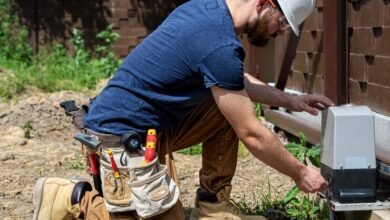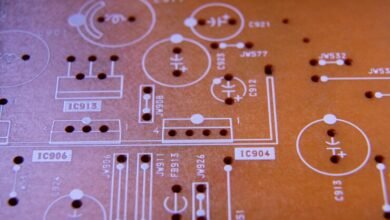snowbreak locate uninterruptible power supply

When managing any critical system, ensuring uninterrupted power is non-negotiable—this is where an Uninterruptible Power Supply (UPS) comes in. For Snowbreak locate uninterruptible power supply a system reliant on continuous operation, the importance of a properly installed and maintained UPS cannot be overstated. Whether you’re troubleshooting or simply looking to improve system reliability, this guide will walk you through locating the UPS in Snowbreak and understanding how it supports smooth operations.
What Is an Uninterruptible Power Supply (UPS) and Why Does It Matter?
An uninterruptible power supply (UPS) is more than just a fail-safe—it’s the backbone of any system that requires uninterrupted performance. A UPS acts as a power reservoir, delivering backup power when the primary source fails or fluctuates. For Snowbreak, it ensures continuous operation, safeguarding critical systems from data loss, downtime, or damage due to unexpected power issues.
Imagine power outages or fluctuations disrupting delicate operations—it’s not just inconvenient but costly. The UPS bridges the gap between power disruptions and system downtime, ensuring your Snowbreak operations remain resilient.
Why Snowbreak Absolutely Needs a Reliable UPS
Snowbreak operates on intricate processes—all of which depend on a steady and clean power supply. A reliable UPS provides:
- Power Backup: Prevents sudden shutoffs during outages.
- Voltage Regulation: Keeps voltage levels within optimal ranges to protect sensitive components.
- System Protection: Guards against surges or unexpected power spikes.
Without continuous power, Snowbreak systems could face data corruption, overheating, or technical failures—problems that are often difficult and expensive to resolve.
Factors to Consider When Choosing the Right UPS for Snowbreak
When selecting a UPS for Snowbreak, it’s essential to evaluate specific factors that align with system requirements.
1. Power Capacity
Ensure the UPS has sufficient wattage to support Snowbreak’s critical components. Check the total power consumption of your system and choose a UPS with headroom for additional load.
2. Battery Runtime
Not all power outages are brief—you’ll want a system with enough battery life to sustain operations until power returns or systems can be safely shut down.
3. Scalability
Can the UPS support growing demands? Snowbreak systems might expand, so pick a unit that adapts to future needs.
4. Form Factor
UPS units come in desktop, rack-mounted, and tower designs. Ensure the selected UPS fits seamlessly into your operational environment.
5. Advanced Features
Modern UPS systems offer features like remote monitoring, energy-efficient modes, and network management—choose one with functionalities that boost overall efficiency.
How to Locate Your UPS in Snowbreak
Locating the UPS system within Snowbreak operations is straightforward once you know what to look for. Follow this step-by-step process to find and access your UPS easily.
Step 1 – Identify the Critical Power Connections
Start by mapping out the connections powering Snowbreak. The UPS will typically sit between your primary power source (e.g., wall outlet) and the critical system components it supports.
Step 2 – Trace Cables from Key Devices
UPS devices often connect directly to servers, core processors, or other power-intensive hardware. Tracing these cables will often lead you back to the UPS unit.
Step 3 – Check Restricted Arenas
UPS units are usually placed in accessible yet protected locations to limit interference. Look for secured enclosures, racks, or heavy-duty compartments housing the unit.
Step 4 – Look for Indicators and Labels
Most UPS systems are clearly marked with status-indicating LEDs or labels. A simple check of these indicators can confirm that you’re looking at the right piece of equipment.
Best Practices for Maintaining Your UPS
Once located, proper upkeep of the UPS system is vital to ensure its performance over time. Below are best practices specifically applicable to Snowbreak locate uninterruptible power supply UPS systems.
Regular Inspections
- Check for visible signs of wear, corrosion, or damage.
- Test LED indicator lights for any warnings signaling functional issues.
Battery Health Monitoring
- Perform monthly health checks on the UPS battery to ensure it holds adequate charge.
- Replace batteries as recommended by the manufacturer to avoid unexpected failures.
Dust and Ventilation Maintenance
- Keep the area around the UPS clean and well-ventilated to avoid overheating and dust accumulation.
Software Updates
If your UPS comes with software or firmware, ensure regular updates to maintain compatibility and security.
Troubleshooting Common UPS Issues
Even with robust maintenance, occasional issues can arise. Here’s how to troubleshoot popular UPS issues in Snowbreak operations.
Loss of Backup Power
- Verify that the UPS is charging and the battery is securely connected.
- Conduct a manual battery test using the UPS software if available.
Alarm Sounds or Error Codes
- Cross-reference the alarm or error code with the manufacturer’s manual for specific instructions.
- Address overheating concerns by improving ventilation around the UPS.
Flickering Power Output
- Check for loose connections in the power flow chain.
- Ensure the UPS input power supply isn’t fluctuating significantly—consider a voltage stabilizer if necessary.
Achieve Continuous Performance in Snowbreak with a Reliable UPS
An uninterruptible power supply is indispensable for ensuring operational continuity in Snowbreak. The right UPS not only bridges power loss but also protects your system from damage due to instability. Beyond choosing the right equipment, following regular maintenance routines and smart troubleshooting strategies ensures your UPS always performs when it matters most.
Investing in a reliable UPS system is more than just a technical requirement for Snowbreak—it’s a crucial step for safeguarding your operations against power-induced disruptions.




